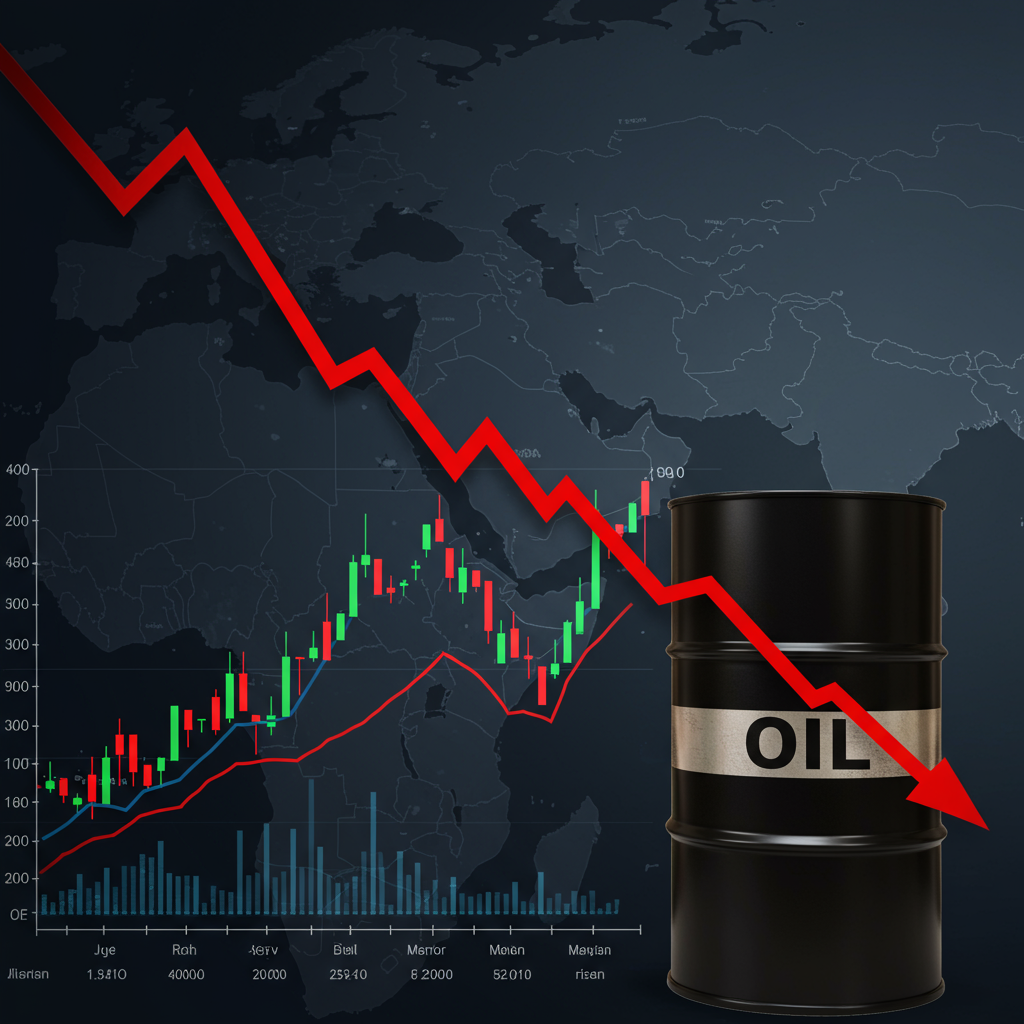Global financial markets opened the week under pressure, reacting sharply to escalating geopolitical tensions in the Middle East after the United States conducted military strikes against Iranian nuclear sites over the weekend. Stock futures pointed lower heading into Monday’s trading session, while crude oil prices surged significantly on fears of supply disruptions.
The market moves followed a surprise U.S. action on Saturday, when the military struck three Iranian nuclear enrichment facilities located in Fordo, Isfahan, and Natanz. The strikes came just hours after President Donald Trump indicated he would decide on a course of action regarding Iran “within the next two weeks,” accelerating the timeline investors may have anticipated for a potential U.S. response. President Trump later claimed the targeted facilities were “totally obliterated” and called the strikes a success, while also issuing a threat of further attacks if Iran did not pursue peace talks.
Stock Futures Tumble on Geopolitical Risk
Early trading Sunday evening saw U.S. stock futures decline across the board. Futures tied to the Dow Jones Industrial Average fell by hundreds of points, dropping around 0.7% to 1%. S&P 500 futures slid by a similar margin, shedding 0.8% or more, while Nasdaq 100 futures saw losses exceeding 1%.
This widespread decline reflects heightened geopolitical uncertainty, prompting a swift “risk-off” reaction from investors. While major indexes like the S&P 500 had shown resilience in previous weeks, even closing Friday just about 3% shy of a record despite two consecutive negative weeks, analysts anticipate a prolonged conflict would pose a significant challenge for equities. Concerns include increased national security uncertainty impacting stock valuations, geopolitical tensions potentially stalling any recovery in market sentiment, and the risk of a major oil price spike exacerbating inflation worries.
Oil Prices Jump on Supply Disruption Fears
In stark contrast to sinking stock futures, oil prices experienced a notable surge. U.S. benchmark WTI crude futures jumped over 4% in early Sunday trading, reaching near $77 a barrel. Brent crude, the international benchmark, also rose by more than 4%, pushing above $80 per barrel at one point. This adds to increases already seen in recent weeks amid rising tensions in the Middle East, with some benchmarks having climbed more than 10% since Israel initiated strikes on Iran over a week prior.
The sensitivity of oil prices is directly tied to the potential for conflict to disrupt global crude supply. Iran is a major oil producer and, critically, controls a significant portion of the coastline along the narrow Strait of Hormuz. This vital waterway serves as a critical chokepoint through which roughly one-fifth of the world’s oil and gas flows.
The Strait of Hormuz: A Critical Chokepoint
The primary market concern is the potential for Iran to retaliate by disrupting or attempting to close off the Strait of Hormuz. Such a move, even if technically difficult to sustain, could severely impede transit, spike insurance rates for shippers, and drastically impact global supply.
Experts hold differing views on the likelihood of Iran closing the Strait. Some analysts believe it is improbable, arguing it would be a self-defeating “scorched earth” tactic, akin to “Sherman-burning-Atlanta,” given that Iran relies on the Strait to export its own crude, primarily to China. They suggest Iranian leaders are “not crazy” and expect oil futures to ease after initial fears subside, allowing stock markets to recover.
However, others are less sanguine, cautioning that countries do not always act rationally and might retaliate for political or emotional reasons despite the economic cost. Should the Strait of Hormuz be completely shut down, analysts warn that oil prices could surge dramatically, potentially reaching $120 to $130 a barrel. Such a price spike would translate to significantly higher costs at the pump for consumers, raise transportation costs for nearly all goods, and complicate efforts by the Federal Reserve to lower interest rates. While a full closure is considered a “worst-case scenario,” the mere increase in the probability of disruption from around 5% to 15% is already contributing a premium to crude prices.
Wider Market Ripple Effects
The geopolitical jitters extended beyond traditional stocks and oil. The crypto market, often seen as a barometer of risk appetite, was among the first to react. Bitcoin dropped below the key $100,000 mark on Sunday, hitting its lowest point in over a month. Other major cryptocurrencies like ether, solana, XRP, and dogecoin also posted sharp losses, dragging the sector into the red. This crypto selloff coincided with a collapse in inflows into spot bitcoin ETFs and significant liquidations of leveraged “long” positions, highlighting how overexposed the market was heading into the weekend.
Interestingly, markets within the Middle East responded differently. Stocks in Tel Aviv reached an all-time high on Sunday, reflecting bets that increased U.S. involvement might help bring the conflict to an end. Other regional markets, including Egypt’s benchmark EGX30, also posted significant gains. Experts noted that Gulf states have largely distanced themselves from the direct conflict, calling for peaceful resolutions, a stance that has helped them isolate from the immediate market impact.
Meanwhile, traditional safe-haven assets saw some upside, with gold ticking higher, climbing within striking distance of its record high. Treasury yields saw only minor fluctuations.
As the trading week begins, markets remain highly sensitive to any developments in the Middle East, particularly regarding Iran’s response to the U.S. strikes and any potential impact on the critical global oil supply routes. The situation is described as “highly fluid,” with future market reactions heavily dependent on whether Iran’s actions are restrained or take a more aggressive course. The increased probability of extreme outcomes, such as a significant oil price surge, is now more actively priced into market indicators.

